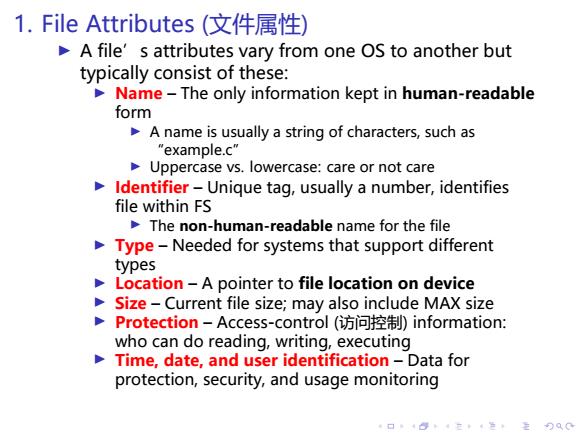正在加载图片...

1.File Attributes(文件属性) A file's attributes vary from one OS to another but typically consist of these: Name-The only information kept in human-readable form A name is usually a string of characters,such as "example.c" Uppercase vs.lowercase:care or not care Identifier-Unique tag,usually a number,identifies file within FS The non-human-readable name for the file Type-Needed for systems that support different types Location-A pointer to file location on device Size-Current file size;may also include MAX size =Protection-Access-control(访问控制)information: who can do reading,writing,executing Time,date,and user identification-Data for protection,security,and usage monitoring 口”484在年生”主)QC. . . . . . . . . . . . . . . . . . . . . . . . . . . . . . . . . . . . . . . . 1. File Attributes (文件属性) ▶ A file’s attributes vary from one OS to another but typically consist of these: ▶ Name – The only information kept in human-readable form ▶ A name is usually a string of characters, such as “example.c” ▶ Uppercase vs. lowercase: care or not care ▶ Identifier – Unique tag, usually a number, identifies file within FS ▶ The non-human-readable name for the file ▶ Type – Needed for systems that support different types ▶ Location – A pointer to file location on device ▶ Size – Current file size; may also include MAX size ▶ Protection – Access-control (访问控制) information: who can do reading, writing, executing ▶ Time, date, and user identification – Data for protection, security, and usage monitoring